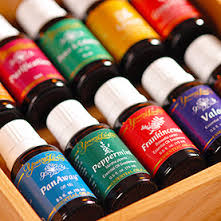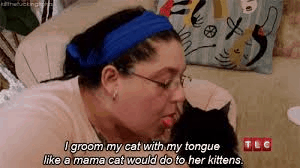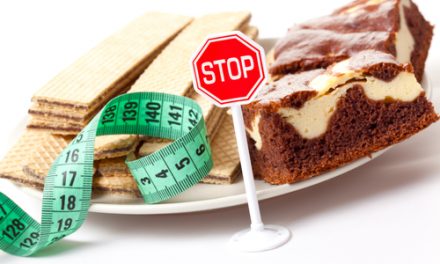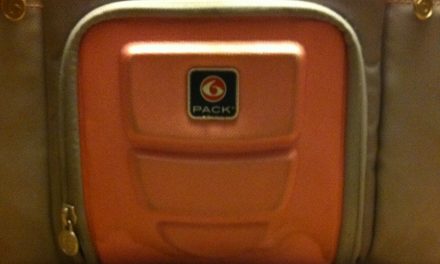Have you ever seen the TLC show ‘My Strange Addiction’? If not check it out on YouTube, its ridiculous. It is abnormally captivating in a strange and unusual way. ‘My Strange Addiction’ is an American documentary series that focuses on people with compulsive behaviours. These compulsions range all the way from eating specific non-food items to bizarre personal fixations or beliefs. I’m not saying that I have incorporated toilet paper or couch cushions into my diet but I have begun using essential oils and I love them! I am full bore, 100% addicted to essential oils. I know what your thinking; “ok you granola eating hippie”… BUT science is in my favor here people.
 We all know about the everyday power of scent: how a particular perfume reminds you of your mother, or when the smell of your favourite restaurant brings you back to your first date there. But did you know that some scents can actually improve your health? Essential oils can also help you relax or sleep, or improve your skin or digestion — their benefits go well beyond a pleasant smell.
We all know about the everyday power of scent: how a particular perfume reminds you of your mother, or when the smell of your favourite restaurant brings you back to your first date there. But did you know that some scents can actually improve your health? Essential oils can also help you relax or sleep, or improve your skin or digestion — their benefits go well beyond a pleasant smell.
“Essential oils can have a healing effect mentally, physically, and emotionally,” said Brianna Scarpelli, a marketer and expert on essential oils with Young Living Essential Oils. You can apply them directly onto your skin, inhale them, or use through a diffuser.”
Technically, essential oils aren’t oils at all, as they lack fatty acids. Rather, they’re highly concentrated plant components. It can take a huge amount of a plant to get out even a small portion of essential oil — 4,000 pounds of Bulgarian roses are needed to get just one pound of oil. This is why some essential oils are so expensive.
I know what you are thinking… after all healthcare is a breeding ground for pseudoscience – and for good reason too. When it comes to our health we really are an easy target. Nobody likes to be sick and nobody wants to lose a loved one. It makes sense, then, that peddlers of pseudoscience often set their sights on the sick. There are as many alternative therapies as there are sick people, but I’d like to focus specifically on essential oils – solutions containing concentrated extracts from plants.
Essential oils enter the body in three ways. They can be:
- Applied to the skin
- Inhaled
- Ingested
How does skin application work?
Essential oils can be applied topically to the skin. Common examples include PanAway essential oil to reduce arthritis pain and improve flexibility, or applying German Chamomile essential oil to treat eczema. How does this work? Our skin is somewhat permeable. The active chemicals in essential oils are absorbed just like the ingredients in common pharmaceuticals such as hormone replacement therapy cream and nicotine patches.
Factors That Increase Skin Absorption
Different factors can affect the absorption of essential oils through the skin. If you massage the area first, it will increase circulation to that area, thereby causing an increase in absorption of essential oils. Heat will likewise increase circulation and thus enhance absorption. Some researchers report that essential oils may be more readily absorbed from skin locations with greater concentrations of sweat glands and hair follicles, such as the genitals, head, soles, palms, and armpits (Battaglia, 2003).
How do I inhale essential oils?
Another way that essential oils enter the body is inhalation through the nose or mouth. Common examples include inhaling essential oil when you have a cough or inhaling peppermint essential oil to reduce fatigue or nausea.
The olfactory system includes all physical organs or cells relating to, or contributing to, the sense of smell. When we inhale through the nose, airborne molecules interact with the olfactory organs and, almost immediately, the brain. Molecules inhaled through the nose or mouth are also carried to the lungs and interact with the respiratory system. Thus, inhaled essential oils can affect the body through several systems and pathways.
Interaction with the Limbic System (Emotional Brain)
During inhalation, odor molecules travel through the nose and affect the brain through a variety of receptor sites, one of which is the limbic system, which is commonly referred to as the “emotional brain.”The limbic system is directly connected to those parts of the brain that control heart rate, blood pressure, breathing, memory, stress levels, and hormone balance (Higley & Higley, 1998). This relationship helps explain why smells often trigger emotions. Knowing this, we can hypothesize how inhalation of essential oils can have some very profound physiological and psychological effects!
How did this weird new addiction make its way into the Tkatchuk household??
It started very innocently, this new addiction of mine. My mom suggested I look into this company called Young Living. It is an American company that produces high quality essential oils. At first I thought this looked like some weirdo pyramid scam and I felt very apprehensive purchasing anything, but a few gals I know use ‘YL’ so I figured what the heck. I ordered the starter kit and began using the oils immediately. I began using Thieves on my feet to boost my immune system, Peppermint to help with digestive discomfort and Lavender on my neck to help me sleep.
Traditionally if I am told that something is going to occur I believe it. I am not stupid nor am I gullible, I prefer to use the word ‘impressionable’. The monkey husband on the other hand has complete opposite personality type. If you look up skeptic in the dictionary you would likely see a photo of him. Neil had a really bad stomach ache the other day and I put some peppermint oil on his tummy, soon there after he had no pain. 100% serious.. I have been using Stress Away and Joy every day, multiple times per day and mentally I feel much more ease and clarity.
Essential oils were mankind’s first medicine. From what I have experienced the claims are in fact legitimate. At the end of the day even if the oils are a hoax I am feeling a benefit to my mental and physical health. So in my opinion even if its in ‘all in head’ a false benefit is better than no benefit at all right?
With love from the Trench kitchen,
xoxoErika♥
Battaglia, S., (2003). The complete guide to aromatherapy. Brisbane, Queensland, Australia: The International Centre of Aromatherapy.
Higley, C., Leatham, P. & Higley, A. (1998). Aromatherapy A-Z. Hay House.
Price, S. & Price, L. (2007). Aromatherapy for health professionals, 3rd Ed. Philadelphia: Churchill Livingstone Elsevier.










